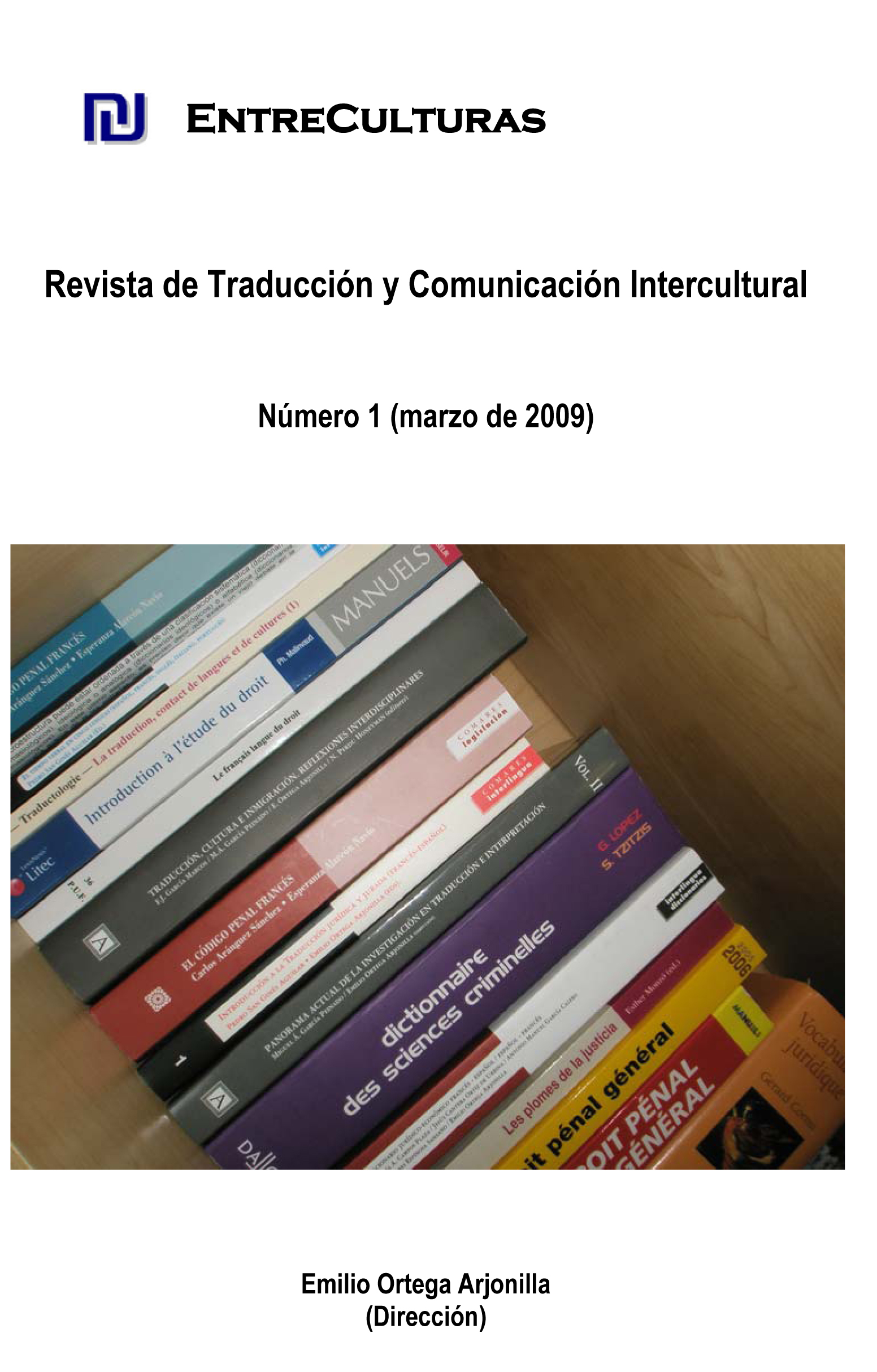LA SINONIMIA Y LA POLISEMIA EN LA TERMINOLOGÍA ANATÓMICA: TÉRMINOS DE UBICACIÓN Y DE RELACIÓN DE ESTRUCTURAS ANATÓMICAS
DOI:
https://doi.org/10.24310/Entreculturasertci.vi1.11886Keywords:
medical texts translation, anatomical terminology, synonymy, polysemy, directional termsAbstract
It is normally stated that anatomical terminology is univocal, precise and concise; nevertheless, this statement does not correspond with its real situation, because synonymy and polysemy frequently happen in this field, what is an obstacle to specialized translation. This paper deals with synonymy and polysemy in the specific case of directional terms.
Downloads
Metrics
References
CABRÉ CASTELLVÍ, Mª TERESA (1999): La terminología: representación y comunicación: elementos para una teoría de base comunicativa y otros artículos. Barcelona: Universitat Pompeu Fabra. Institut Universitari de Lingu?ística Aplicada.
DORLAND diccionario enciclopédico ilustrado de medicina (2005): 30ª ed. Elsevier.
FENEIS, HEINZ (1994): Nomenclatura anatómica ilustrada. Barcelona: Masson; Salvat Medicina.
GUTIÉRREZ RODILLA, BERTHA M. (1998): La ciencia empieza en la palabra: análisis e historia del lenguaje científico. Barcelona: Península.
VAN HOOF, HENRI (1998): “Portrait de la traduction médicale. Ses difficultés - ses exigences - son enseignement” en Félix FERNÁNDEZ, L. Y ORTEGA
ARJONILLA, E. (COORDS.) (1998): Traducción e interpretación en el ámbito biosanitario. Granada, Comares.
— (1999) : Précis de traduction médicale (anglais-français): manual práctico de traducción médica: diccionario básico de términos médicos (inglés-francés-español). Granada: Comares.
KAMINA, P. (1990): Petit dictionnaire d’anatomie, d’embryologie et d’histologie (nomina anatomica). Paris: Maloine.
MOORE, KEITH L. Y DALLEY, ARTHUR F. (2002): Anatomía con orientación clínica. 4ª ed. Buenos Aires: Editorial Médica Panamericana.
SNELL, RICHARD S. (2002): Anatomía clínica para estudiantes de medicina. 6º ed. México: McGraw-Hill Interamericana.
STEDMAN, Diccionario de ciencias médicas ilustrado (1993): 25ª ed. Editorial Panamericana. Stedman’s Electronic Medical Dictionary [en línea] (2006): http://www.stedmans.com/section.cfm/45 [consultas: 25 de marzo de 2007].
URRUTIA CAVERO, MERCEDES (2005): «Análisis cualitativo de la traducción científica y técnica: los errores semánticos y su clasificación», en Campos Plaza, Nicolás et al. (eds.) (2005): El español, lengua de cultura, lengua de traducción: aspectos teóricos metodológicos y profesionales. Granada: Atrio; Universidad de Castilla-La Mancha.
Downloads
Published
How to Cite
Issue
Section
License
All contents published in Entre culturas. Revista de traducción y comunicación intercultural are protected under the Creative Commons Attribution-NonCommercial-ShareAlike 4.0 International (CC BY-NC-SA 4.0) license. All about this license is available in the following link: <http://creativecommons.org/licenses/by-nc-sa/4.0>
Users can copy, use, redistribute, share and exhibit publicly as long as:
- The original source and authorship of the material are cited (Journal, Publisher and URL of the work).
- It is not used for comercial purposes.
- The existence of the license and its especifications are mentioned.
There are two sets of authors’ rights: moral and property rights. Moral rights are perpetual prerogatives, unrenounceable, not-transferable, unalienable, imprescriptible and inembargable. According to authors’ rights legislation, Entreculturas. Revista de traducción y comunicación intercultural recognizes and respects authors moral rights, as well as the ownership of property rights, which will be transferred to University of Malaga in open access. The property rights are referred to the benefits that are gained by the use or the dissemination of works. Entreculturas. Revista de traducción y comunicación intercultural is published in an open access form and it is exclusively licenced by any means for doing or authorising distribution, dissemination, reproduction, , adaptation, translation or arrangement of works.
Authors are responsable for obtaining the necessary permission to use copyrighted images.





7.png)
